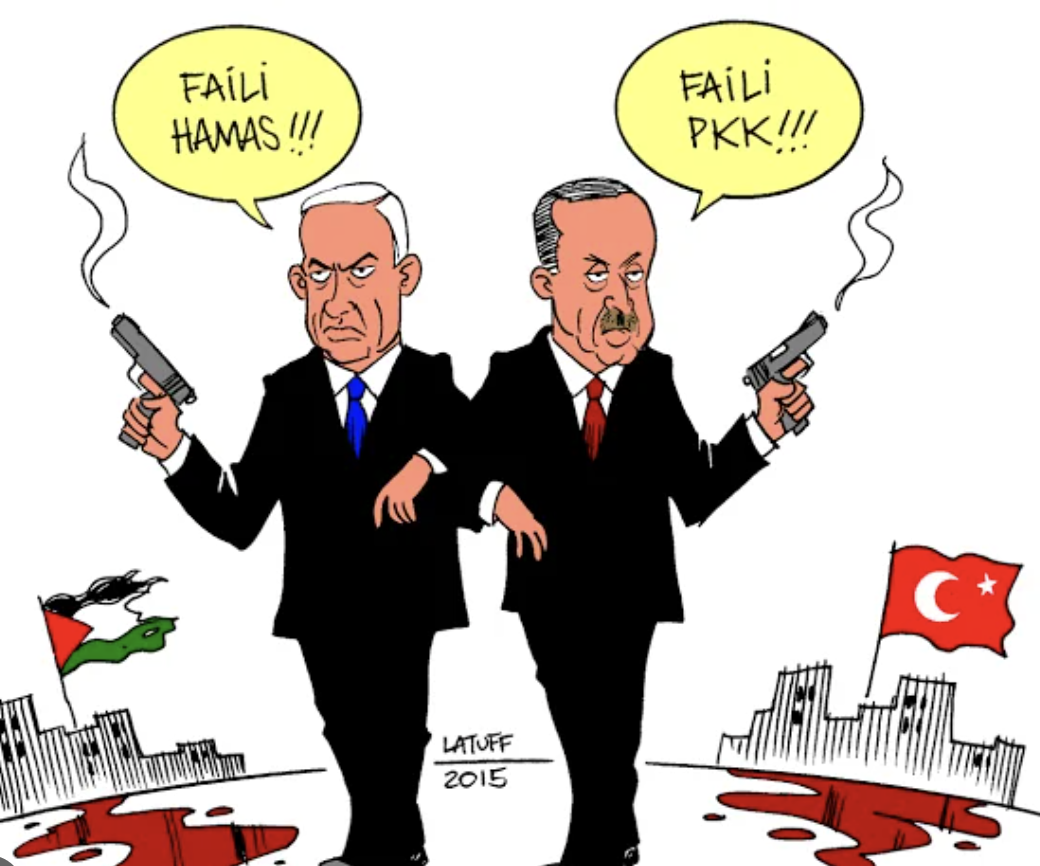As the geopolitical tectonics of the Middle East continue to shift in the aftermath of the Syrian Civil War, the question of whether Turkey and Israel are on a collision course over Syria is gaining strategic significance. The stakes are high: Syria, though deeply fractured, remains a theater where regional power dynamics are projected and tested. Both Ankara and Tel Aviv have competing interests in northern Syria, and as their respective military footprints deepen—especially through proxy forces, air power, and intelligence operations—the potential for escalation increases.
This essay examines the plausibility of direct military confrontation between Turkey and Israel over Syria, assessing comparative military capabilities, doctrinal postures, geopolitical incentives, and the likely position of the Trump administration should tensions reach a flashpoint.
Diverging Strategic Objectives in Syria
At the core of Turkey-Israel tensions over Syria lies a divergence of strategic objectives. Turkey views northern Syria primarily through a national security lens, seeking to prevent the establishment of a Kurdish autonomous region under the control of the YPG, which Ankara considers an extension of the PKK—an insurgent group designated as terrorist by Turkey, the U.S., and the EU. Turkey’s repeated military incursions (Euphrates Shield, Olive Branch, Peace Spring) have focused on neutralizing YPG positions and establishing buffer zones along its border.
[embed]https://www.youtube.com/watch?v=FcH7APGASQk&t=696s[/embed]
In contrast, Israel’s primary concerns in Syria are centered around Iran. Israel seeks to prevent the entrenchment of Iranian Revolutionary Guard Corps (IRGC) units, Hezbollah militias, and Tehran-backed Shia militias in southern and central Syria. This has led to over 1,000 airstrikes on Iranian-linked assets in Syria since 2017, including weapons convoys and air defense systems.
These divergent aims—Ankara’s anti-Kurdish campaign versus Israel’s anti-Iran campaign—have so far allowed deconfliction. However, recent Turkish overtures to Hamas and increasingly hostile rhetoric toward Israel’s operations in southern Syria introduce a dangerous friction point. Should Turkey begin to support anti-Israeli factions or deploy intelligence assets in areas where Israel operates, the risk of direct confrontation would rise sharply.
Comparative Military Capabilities
A key factor in assessing the plausibility and outcomes of any potential war scenario is the comparative strength and readiness of both militaries.
Turkey (TSK - Turkish Armed Forces)
Personnel: Approx. 425,000 active-duty troops, with a large conscription-based reserve.
Air Force: Over 200 F-16s, though modernization has stalled due to Turkey’s ejection from the F-35 program after acquiring Russia’s S-400 system.
Land Forces: 2,500+ main battle tanks, including Leopard 2A4s and older M60s.
Missile Capabilities: Short-range ballistic missiles like Bora (280 km range).
Drones: Turkey has emerged as a drone superpower, fielding Bayraktar TB2s, Ankas, and the new Akinci UCAV, capable of carrying heavy payloads and precision munitions.
Naval Power: Relatively limited in blue-water projection, though Aegean-capable.
Doctrine: Turkish doctrine emphasizes combined arms operations, asymmetric warfare capabilities honed in Syria, and growing use of UAVs for ISR and precision strike roles.
Israel (IDF - Israel Defense Forces)
Personnel: ~170,000 active-duty troops, with 450,000+ reserves with rapid mobilization capacity.
Air Force: Over 350 combat aircraft, including 36 F-35I Adirs, one of the most advanced 5th-gen platforms globally.
Air Defense: The world’s most layered missile shield (Iron Dome, David’s Sling, Arrow II/III).
Cyber & Intelligence: Dominates regional SIGINT and cyber operations through Unit 8200 and Mossad.
Precision Strike: Proven capacity for deep-strike missions across multiple theaters, including Syria, Iraq, and Iran.
Naval Power: Submarine-based second-strike capability via Dolphin-class SSKs.
Doctrine: The IDF favors a high-intensity, short-duration, technology-dominant approach, leveraging air superiority, electronic warfare, and deep strike to paralyze adversary decision-making early in conflict.
Probable Conflict Scenarios and Outcomes
In a direct war, Israel would almost certainly dominate in airspace control, cyber warfare, and precision targeting. However, Turkey’s numerical superiority, land depth, and drone warfare expertise present unique asymmetries. The most likely clash scenario would not be a full-scale state-on-state war but a limited conflict in Syrian territory, involving airstrikes, drone clashes, or even proxy militia engagements.
Turkey’s vulnerability lies in its limited air defense infrastructure, especially against Israeli stand-off weapons and electronic warfare platforms. Conversely, Israel is vulnerable to drone swarms and ballistic missiles launched from Turkish-controlled zones in northern Syria or even via proxy militias embedded in Syrian opposition groups.
An all-out war would be devastating to both, with NATO complications on Turkey’s side and regional destabilization severely damaging Israel’s already stretched diplomatic relationships. However, the strategic rationality of both actors makes such escalation unlikely—unless a black swan event (e.g., accidental shoot-down, high-profile assassination, or proxy miscalculation) triggers a cycle of retaliation.
Trump Administration's Likely Position
[embed]https://www.youtube.com/watch?v=a441QTHEv4c&t=1334s[/embed]
Under President Trump, the U.S. foreign policy doctrine gravitated toward transactionalism and selective engagement. In practice, this meant a strong pro-Israel stance—epitomized by the Abraham Accords, Jerusalem embassy move, and de facto carte blanche for Israeli operations in Syria. Turkey, on the other hand, was viewed with strategic ambivalence. While Trump personally maintained warm ties with President Erdoğan, institutional tensions remained high due to Turkey’s S-400 acquisition, Kurdish policy, and regional adventurism.
Should conflict erupt, the Trump administration would likely lean toward Israel diplomatically and through intelligence sharing, while publicly calling for restraint. U.S. CENTCOM has coordinated closely with Israel in Syria, and American forces still operate in eastern Syria near Deir ez-Zor and al-Tanf. These zones are far from Turkish operations but lie within Israeli operational envelopes, increasing the risk of tripartite conflict management.
However, a military intervention on Israel’s behalf is improbable unless Israeli territory is directly attacked. More realistically, the Trump administration would act to prevent escalation, pressure NATO allies to rein in Ankara, and possibly enact sanctions should Turkey cross certain thresholds (e.g., targeting Israeli population centers).
Conclusion
While a direct war between Turkey and Israel over Syria is not inevitable, the risk is no longer negligible. Both states operate in close proximity, with increasingly incompatible strategic interests and robust military footprints. As Israel intensifies its anti-Iran campaign and Turkey seeks to expand its zone of influence through proxies and kinetic means, deconfliction becomes harder to maintain.
A carefully calibrated crisis-management architecture is urgently needed, potentially mediated by the U.S. or Russia, to avoid accidental escalation. Ultimately, mutual deterrence and the high cost of open war should constrain both parties. Yet, given the volatility of the Syrian theater and the unpredictability of political decision-making in both Ankara and Jerusalem, the possibility of a miscalculated spiral into conflict remains a credible threat.
PA Turkey staff analysis
IMPORTANT DİSCLOSURE: PA Turkey intends to inform Turkey watchers with diverse views and opinions. Articles in our website may not necessarily represent the view of our editorial board or count as endorsement.
Follow our English language YouTube videos @ REAL TURKEY:
https://www.youtube.com/channel/UCKpFJB4GFiNkhmpVZQ_d9Rg
And content at Twitter: @AtillaEng
 erdogan netanyahu
erdogan netanyahu


